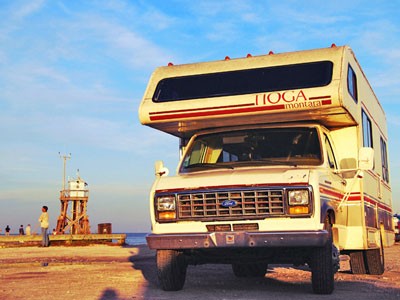With legions of Americans about to hit the road for a three-day weekend provided by the Independence Day holiday’s serendipitously falling on a Friday this year, you might want to take a look at personal finance quirk related to roadside assistance plans.
AAA forecasts that 41 million people will travel more than 50 miles from home this weekend — and odds are that hundreds of thousands of these vacationers will find themselves in the breakdown lane with a flat tire or worse. Many of them will put out a plea for a tire change, a tow or help. But call … whom?
Goodyear Tire & Rubber Co. wants you to call them; they’re just out with a new toll-free number , smartphone app and $40 annual service fee that will get you to free towing — with one catch: Your tow truck will wheel you to a Goodyear auto repair shop. Interesting marketing idea to launch just before the holiday.
Its a crowded field. As the Reynolds Center’s Digital Director Robin Phillips recently pointed out, many consumers these days have overlapping roadside assistance coverage. Gone are the days when AAA was the only provider; today’s motorists may be covered by — and unwittingly paying for — similar coverage from their automobile dealer or automaker, their cell phone plan, insurance policy, credit card and other vendors.
Motorists may wonder if it’s worth it to stay in one program — and which one is the best to call under a variety of scenarios. Verizon, for example, charges $3 a month — if you already have AAA or a new-car-related program, should you opt out and save the $36 a year, which is hardly pocket change.
Is it worth it to stay in more than one program if you have to pay? Surprisingly, it might be. Check out this Consumer Reports piece that points out the different terms, coverage options and services provided by a variety of plans; it may makes sense for consumer to keep overlapping policies.
For example, as the report points out, auto club plans usually follow the policy holder no matter what vehicle he or she is in, so if you’re riding in a friend’s car when the battery dies, you still can summon help. Cell phone sponsored plans apply to whomever has the phone in hand. Some plans offer legal defense funds for traffic offenses (except for DUI) while others guarantee auto repairs.
Sounds like it might behoove consumers to spend a few minutes combing through their financial purchases, policies and subscriptions to determine what coverage they have and what the fine print is on each. Then when misfortune strikes, they can contact the provider that makes the most sense in a given scenario. A flat tire — who needs guaranteed engine repairs; you might want to call the company with the widest network. Far from home in someone else’s vehicle; you might be glad you kept AAA as well.
Here’s an older but interesting Popular Mechanics article, “Who really provides your roadside assistance?” that points out most of the non-AAA plans use a third-party provider and often the same one; the industry biggie is Agero and it handles roadside assistance for many automakers and other plan providers.
In addition to a personal finance piece about the ins and outs of roadside plans, you might want to do a contrarian holiday-weekend story about those who will be working, not loafing, including the tow-truck industry, auto repair shops and even hospital emergency room staffers — all of those behind-the-scenes occupations that help travelers when the Fourth of July sizzle turns to fizzle.
Another question to ask of towing companies: Is it worth it to them to be affiliated with a roadside service? It must be, if so many do, but what cut does the plan take? Do consumers in plans get faster response time than those who just Google for the nearest wrecker? What else is new or challenging in the tow-truck business model these days?











